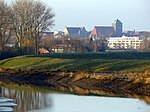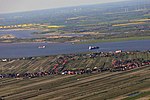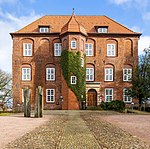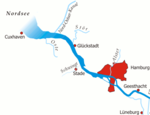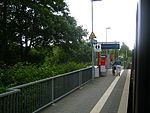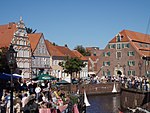Stade Nuclear Power Plant
Buildings and structures in Stade (district)Economy of Lower SaxonyFormer nuclear power stations in GermanyStadeVattenfall nuclear power stations

Stade Nuclear power plant (German: Kernkraftwerk Stade, KKS) operated from 1972 to 2003 in Bassenfleth close to the Schwinge river mouth into the Elbe river. It was the first nuclear plant shut down after Germany's nuclear phase out legislation and is currently being decommissioned (Phase 2: Deconstruction of larger modules in the containment building). The station is on the left bank of the Elbe in Stadersand, a locality of Stade, to the west of Hamburg in Lower Saxony beside Schilling Power Station, which has also been shut down. It was a light water reactor.
Excerpt from the Wikipedia article Stade Nuclear Power Plant (License: CC BY-SA 3.0, Authors, Images).Stade Nuclear Power Plant
Stadersand-Bassenfleth,
Geographical coordinates (GPS) Address Nearby Places Show on map
Geographical coordinates (GPS)
| Latitude | Longitude |
|---|---|
| N 53.62 ° | E 9.5308333333333 ° |
Address
Stadersand-Bassenfleth
21683
Lower Saxony, Germany
Open on Google Maps

